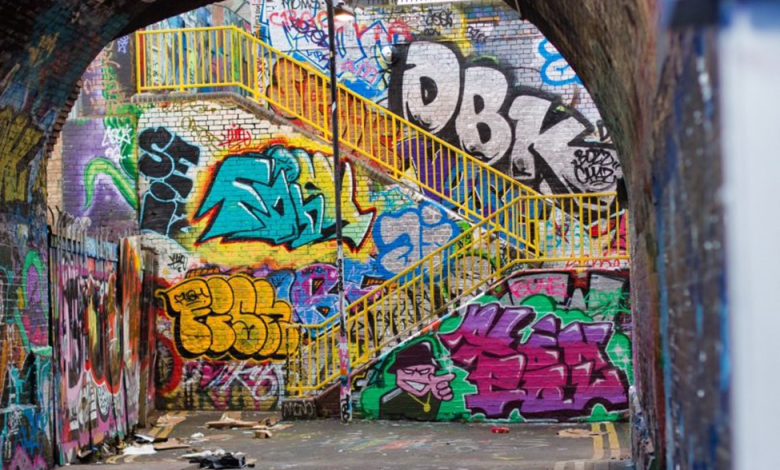Graffiti and the Identity Construction of Youth

In each part of the world, one could easily encounter street art or graffiti and not be surprised by this encounter, because people are acclimated to living with graffiti. Actually, since the existence of human beings, there have been figures and writings on walls and many other public spaces, through which people have revealed their need to express themselves and leave a mark. It has been used as a form of communication and represents a human need to voice opinions. People have sometimes drawn caricatures for criticism, sometimes written catchphrases or lines of poetry on walls, and sometimes they have painted simply for the sake of art—art is also a way of expressing feelings or thoughts—for a very long time. But this “…modern articulation of graffiti and its connection to urban decay has its origins in the 1970s.” (Carrington, 2009, p. 419) and spread all over the world. Especially in those days, marginalized young people protested the rise of social inequalities, and they used graffiti for this purpose. Thus, even today, graffiti is known as an illegal activity, and it somehow affects the shaping of young writers’ identities. In today’s article, we will look more closely at the relationship between graffiti and the identity construction of young people.

Primarily, people in their adolescent period search for an identity, face problems that make them feel incompatible, and graffiti is partially an innocent and colorful way of coping with their distress. In general, graffiti writers are adolescents, which means they are between childhood and adulthood. As Zastrow and Kirst-Ashman (2004) clarify, the developmental task of adolescence is to construct an identity and understand “Who am I?”. This is an ascription to Erik Erikson’s developmental theory. To build up an identity, adolescents first try to grasp the idea of who they are, what they love, and what they tend to do. Then they start to experience many things to choose or eliminate for their entire lives, and their occupations shape their personalities and eventually, their identities. In this trial stage, they do graffiti and tag their names or write their thoughts to show they have something to say; they can love, hate, and react, too. Besides, youngsters have existential problems and, thanks to graffiti, they have a chance to show their existence. They need to be noticed by other people, and by tagging their names or drawing their own artistic pieces, they feel more satisfied.
Furthermore, they often face family issues, environmental problems, and identity-related challenges. Graffiti appears as a coping method, and many young people choose this colorful option rather than other bad habits around them. “Many come from the inner city surrounded by violence and drugs. They become drawn to the colorful art pieces which seem to soothe their maladaptive behaviors. They use graffiti as a way of coping with their lives and unstable environment.” (Valdez, 2007, p. 7). Youths who live in the countryside may find more natural occupations to calm themselves, reflect on their problems, and find solutions. However, in big cities—as Valdez (2007) mentioned—violence, drugs, and gangs are also options, and even more common. Graffiti, on the other hand, is an artistic engagement and prevents the young from taking drugs or fighting, even killing, under the wing of a gang. This doesn’t mean that graffiti is a cute and harmless activity that youth should absolutely engage in—it is still illegal. Yet, graffiti can be seen as the least harmful activity compared to other destructive habits for soothing maladaptive behaviors and coping with problems.
To sum up, adolescents want to establish an identity. They try many things to shape their personalities and confront difficulties, and graffiti can be counted as one of the tools for this.
References
Carrington, V. (2009). I write, therefore I am: texts in the city. Visual Communication, 8(4), 409–425. https://doi.org/10.1177/1470357209343356
IDENTITY-CRISIS. (n.d.). https://www.pitturiamo.com. https://www.pitturiamo.com/en/modern-painting/identity-crisis-50x70cm-140556.html
September, R. (2024, November 22). Graffiti vs Street Art: What’s The Difference? Graff Storm.
Valdez, L.M.A. (2007). Graffiti art and self-identity: Leaving their mark. Theses Digitization
Project. 3079.https://scholarworks.lib.csusb.edu/etd-project/3079
Zastrow, C., & Kirst-Ashman, K. K. (2000). Understanding human behavior and the social environment. https://ci.nii.ac.jp/ncid/BA12468717





